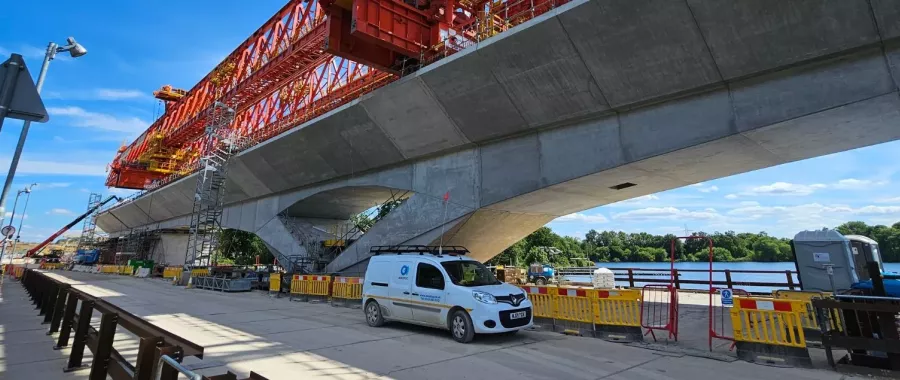Calders Wharf is undergoing regeneration, with the existing community centre being demolished to allow for the development of a new purpose-built facility together with 25 new homes.
Summary of works
Client: Telford Homes
Start Date: March 2017
Completion Date: May 2018
With the DLR tunnels located directly beneath the site, continuous monitoring was required to understand the impact of the works on the surrounding infrastructure.
System
- 3D prism targets
- Automated Total Stations
- Data loggers
- Calyx Online Monitoring Software™

Case Study
Project Details

ITM Monitoring, now SOCOTEC Monitoring UK Ltd, is pleased to be working with Telford Homes and Docklands Light Railway (DLR) on this project, providing the design and installation of a rigorous monitoring system within the north and southbound tunnels.
The fully automated monitoring scheme has been installed between the Cutty Sark and Island Gardens DLR stations, totalling approximately 100 meters, and comprises two Automated Total Stations (ATS) and 3D prism targets installed at 5m intervals in each tunnel. Each prism array features five prisms on the tunnel structure itself and two on the track (one on each running rail). Two data loggers transfer information on an hourly basis back to ITM’s head office and into Calyx OMS™, where the data is analysed 24/7 with automatic alarms in place should set parameters be exceeded, giving peace of mind to the DLR.
ITM Monitoring, now SOCOTEC Monitoring UK Ltd, is pleased to be working with Telford Homes and Docklands Light Railway (DLR) on this project, providing the design and installation of a rigorous monitoring system within the north and southbound tunnels.
The fully automated monitoring scheme has been installed between the Cutty Sark and Island Gardens DLR stations, totalling approximately 100 meters, and comprises two Automated Total Stations (ATS) and 3D prism targets installed at 5m intervals in each tunnel. Each prism array features five prisms on the tunnel structure itself and two on the track (one on each running rail). Two data loggers transfer information on an hourly basis back to ITM’s head office and into Calyx OMS™, where the data is analysed 24/7 with automatic alarms in place should set parameters be exceeded, giving peace of mind to the DLR.
The biggest concern when installing anything inside a running tunnel is how close the operational trains get to the equipment, so the monitoring scheme had to work to the DLR’s tight specifications. The prisms are fairly small in size, so they have a minimal profile inside the tunnels and don’t have any bearing on the trains. However, to install the ATSs special approval was required from the DLR, especially due to the added challenge of this particular section of track being on a tight curve. Due to the available space – and the DLR’s clearance requirements, which are a minimum of 150mm gap between the top of the train and the structure – the preferred solution for the RTSs was to suspend them using a bracket in the crown of the tunnel, which puts them directly above the trains.
Simon Hough, Project Manager at ITM Monitoring, comments:
“We worked closely with our client and the DLR to demonstrate that our recommended monitoring solution would deliver the data and knowledge they require whilst also working within the DLR’s strict clearance requirements. Despite carrying out additional testing and checks once the instruments were installed, we were able to get the system up and running within the limited timeframe, to ensure that works could begin as planned.”



